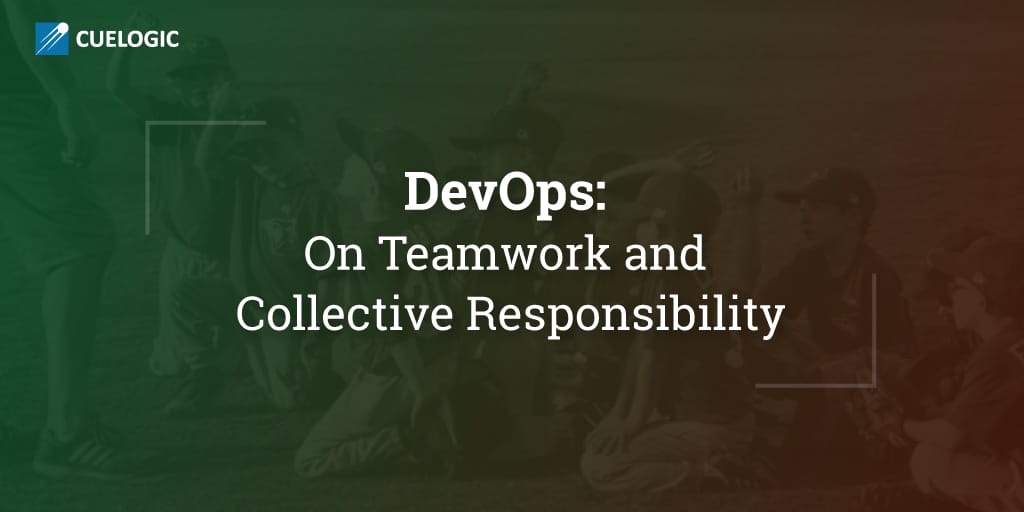“DevOps is a slightly misunderstood concept by many. For me DevOps is not a “new Job Profile”, it is a culture. DevOps is set of tasks that needs to be performed by Agile team to complement and automate various activities in the development lifecycle (Code, Build, Test, Package, Release, Configure, Monitor). Those tasks can be shared amongst the team.” – Vikrant Labde, Chief Technology Officer, Cuelogic.
DevOps is a culture that an IT organization inculcates into its working. Otherwise, you might as well have a system administration handling various software development-related processes. That is why there are a set of DevOps tools that identify DevOps as a distinct practice.
When it comes to efficiency, choosing the right technology, eradicating repeatable, time-consuming processes with automation – a DevOps developer is a game changer. DevOps is also essential while implementing Agile methodology.
Rapid, Reliable & Frequent
DevOps is a channel between developers and operations. Integrating DevOps is a collective responsibility. A superior IT company performance is an efficient mix of software development and operations.
Setting up an environment where software building, testing and release can occur at a rapid pace, reliably and frequently, thanks to DevOps. Check the link of DevOps for Beginners here.
DevOps 2016 Survey Fact 1:
High-performing organizations deploy 200 times faster than other organizations. They have 2,555 faster lead times and 24 times faster recovery times. The failure rates are also three times lower as compared to low performing organizations.
Collaborative & Communicative
A lot goes into an IT company’s working, apart from technical practices. DevOps as an effective practice and culture is a collaborative, communicative initiative. It works between software developers and those responsible for changes in company infrastructure. Learn more about implementing DevOps here.
DevOps 2016 Survey Fact 2:
Performing organizations spend 22% less time on unplanned work and reworking. Consequently, they spend 29% additional time on new work – like code and new features.Quality is built into each development process stage. This is in contrast to fitting it into the development cycle. DevOps services can thus help the company technology expert invest in the right technology, save on production cost and also help in reinvesting the savings.
Security, Quality & Business
The 2016 State of DevOps report showcases how improvements in the product life cycle can improve security, quality and business outcomes. The survey also showcased how organizations must invest in people and processes, rather than on technology. DevOps also improves the organization’s work culture, while increasingly engaging the audience. Even the security in DevOps can also be integrated to improve the quality of the environment further. Check out this short video to reemphasize points about DevOps and continuous integration here.
DevOps 2016 Survey Fact 3:
Top performing companies spend 50 percent less time in tackling security issues as compared to low performers.Integrating data security into daily work, teams obtain a higher performance level and thus build more secure systems.
Implementing DevOps
To quote an example, in an ongoing project, a DevOps engineer would ensure that the right technology is at hand. DevOps would be responsible for server handling, deployment, integration and ‘pushing’ code from the developer’s end.
A ‘pushing’ code example: A leading social networking website will employ multiple servers as a first point of contact, when the user types in the website url. Therefore code has to be deployed at a particular place, so that web servers can use the same in the back end. To ensure that the code goes from local computer all the way to the server, is what we refer to as ‘pushing’ code.
DevOps 2016 Survey Fact 4:
Product development cycle commences a long time before coding.IT performance will improve and quicker deployment will occur if the product team makes work flow more visible, break down products & features into smaller lots and use customer feedback to their advantage.
Towards Automation
Before DevOps came into the picture, a major part of IT work was manual. Automation is a specific part of DevOps training. Singling out repetitive tasks, those involving manual work and automating the process (through technology, code or algorithm) is an important DevOps responsibility. Integrating all frequent changes is a DevOps powered process.
DevOps 2016 Survey Fact 5:
DevOps enables company’s tech experts to invest in the right kind of technology. This helps an organization to save drastically on production costs. Top organizations get their MTTR to less than one hour, (MTTR: Mean time to recovery: Average time a device takes to recover from any failure) as compared to the ‘less than one day MTTR’ recorded by other organizations.
Another ‘DevOps to the Rescue’ Example
So you type in a code, test it on the local machine where it works fine. But the code breaks on uploading onto the server. When DevOps is introduced into this scenario, you get a streamlined, unified process. Reduction in failure rate, smoother adaption to change, easier deployment are other benefits. Though an individual person may be designated as a DevOps engineer, the responsibility is of the entire team.
DevOps 2016 Survey Fact 6:
Top DevOps implementing companies deploy routinely on demand, conducting multiple deployments every year. Low performing companies deploy once a month or every six months. On an average, top companies deploy code 200 times more often than their low-performing competitors.Also, top performers record a 0-15% failure rate, low performers register 15-30% failure percentage.
Summary
We conclude our article, supported as it is with detailed survey findings that DevOps is integral to an IT company’s success. Sound implementation is the key. Do check our blogs out for the latest on technology.
(Statistics Source: Puppet,Inc and DORA (DevOps Research & Assessment)

